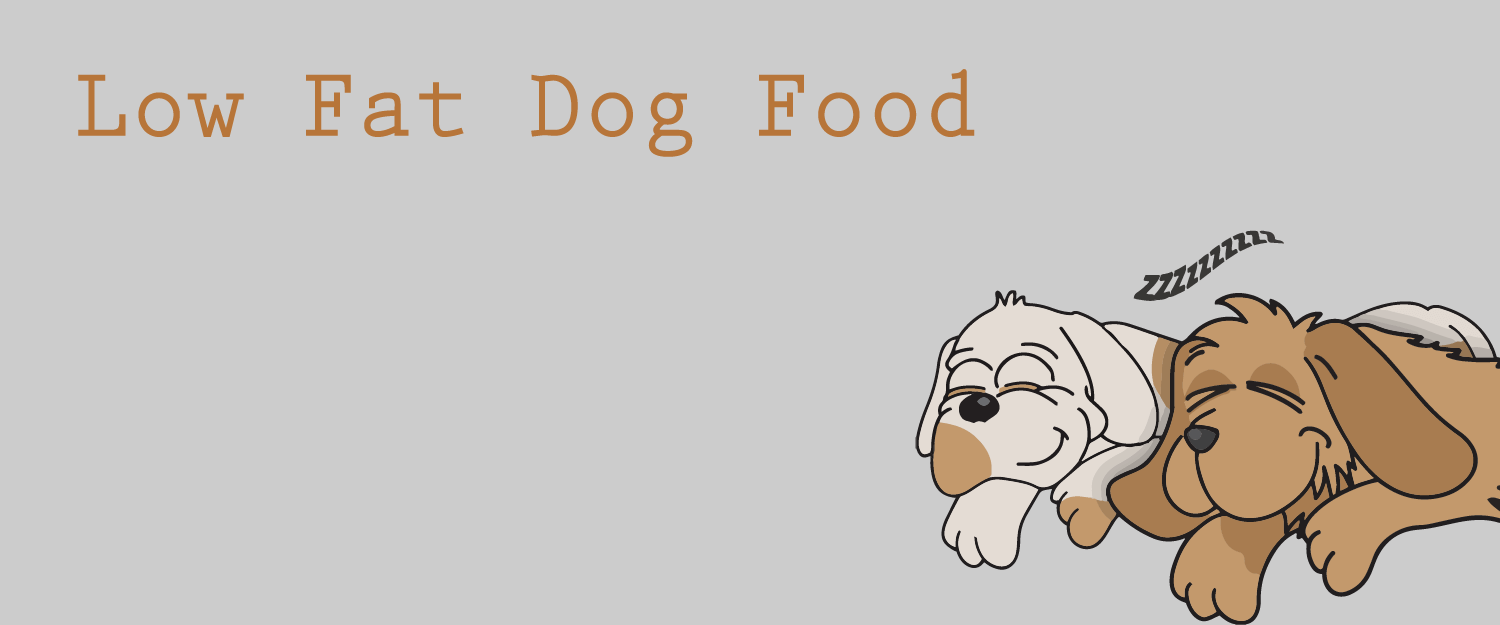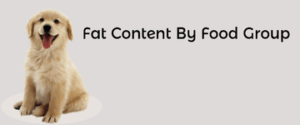Simply copying your Weight watchers diet plan, for Low Fat Dog Food will simply not work!!!
If the need arises to make changes to your Shih Tzu’s diet, your vet may talk with you about choosing a food with lower fat content than your normal brand. It is important to talk any dietary changes over with your vet prior to changing anything.

Why your Shih Tzu might need a low fat food
The usual reason for feeding a low fat diet is in response to some type of medical disorder. In a healthy animal, fat is a much needed and integral part of the diet. There are three main reasons why you may need to start Fido on a low fat food:
-
Pancreatitis
This painful condition causes the pancreas to become inflamed and reduces its effectiveness in assisting the digestive system to work properly. It also makes digesting fat extremely difficult.
-
Obesity
We all love to make our pets happy by feeding them special treats. Just look down the aisles of a pet store – treats account for billions of dollars in global sales annually. Unfortunately, when we feed them the wrong way we are contributing to weight gain and encouraging unhealthy habits.
An extra pound or two is not such a big deal. However, when the weight gain becomes extreme it leads to a ton of other problems such as joint issues, high-blood pressure, high-cholesterol, and pancreatitis.
-
Tummy sensitivities
Certain dogs are like humans – they have a stomach that is more sensitive than normal. This is normally not difficult to notice, since there will be plenty of messes to give you some clues.
One of the first things a vet will suggest is a reduction in your Shih Tzus intake of fat. Even though fat is needed in the diet, it is difficult to digest in general, more so than even protein. When there is too much floating around the stomach will start to rebel, making a low fat food virtually crucial.
Fat content by food group
When a conclusion has been reached that your pet’s intake of fat needs a slight decrease, you can follow a standard rule of thumb!

Dry dog foods usually have the lowest amounts of overall fat (10-15%), raw food diets have the greatest amounts of fat (20-30%), and wet dog food falls in the middle, (25-15%). These are simply guidelines. Every brand has options that are higher and lower than the approximated percentages listed above.
What is the best form of low fat diet to follow?

This is a question with no simple answer. Several factors come into play when deciding to choose dry, wet, or raw diets, and price is only one consideration.
-
Raw food
The raw food diet is most expensive (Please Refer to this for a list of the best cheap dog food). This depends upon the protein source you are using and whether you plan to purchase from your local butcher, or if you are a hunter able to provide fresh meat year round. Obviously, it would be more cost-effective if you were using venison or rabbit that you killed yourself as opposed to paying exorbitant grocer’s prices. Certain proteins are less costly than others so if you want to feed a raw food diet and still cut costs, look towards pork or beef.
-
Wet food
Wet, or canned food, has excellent options in the low fat category. There is no skimping on taste either, since the flavour options range from pheasant to filet mignon. This is often the best option for senior dogs that have dental problems or difficulties with chewing and swallowing.
Keep in mind that adding water or unsalted broth into your pooch’s dry food bowl to make a gravy-like consistency can also be considered wet food.
-
Dry food
It is truly astonishing to walk down the aisles of dog food in a pet store. Everywhere you look, there is something new to draw your attention. Marketing professionals have done their jobs well, since we usually cannot make a decision without getting some assistance after frustration levels rise.
Price points for dry dog food are all over the board. Since you should be looking to choose a food containing no artificial preservatives, purchase a bag size you will go through quickly in order to preserve freshness.
As always, if you are unsure whether a certain food is appropriate for your Shih Tzu, speak with your vet to voice your concerns.
What ingredients to avoid

When it comes to avoiding ingredients, follow this simple rule: If you cannot pronounce it, put it back! A complete list of what to avoid is a book all its own, but practice learning how to read labels and keep your eye out for the following:
- Artificial colors, flavours, or preservatives
- White flour
- MSG
- Gluten
- Meat and meat meal
- BHT/BHA
- Xylitol or other sugar alcohol
- Salt
- Soy
- Nitrates
- Farmed salmon
- Sodium tripolyphosphate (STTP)
- Propylene glycol
- Animal by-products and animal digest
- Rendered fat
- Sodium hexametaphosphate
- Corn
- Potato products
- Titanium dioxide
- Cellulose
- Grape pomace
What ingredients to seek out

- Carrots, peas, bell peppers, Brussels sprouts, zucchini, lettuce, asparagus, sweet potatoes, or green beans
- Cauliflower, cabbage, broccoli, winter squash, pumpkin, dark leafy greens
- Oatmeal
- Real meat – beef, lamb, chicken, turkey, duck, bison, etc.
- Whole grain brown rice
- Eggs
- Cottage cheese
- Banana, apricots, apple, mango, cranberries, blueberry, pineapple, pear, orange, cantaloupe, watermelon, strawberries, or raspberries
- Coconut oil
How much to feed
The amount of food your Shih Tzu receives will depend largely on your pooch and their weight. The general guideline is to feed approximately 30 grams of food for each kilo of body weight in an adult dog. Senior dogs expend less energy so around 20 – 25 grams per kilo is a good number. Puppies require roughly double the amount an adult needs to meet their optimal growth requirements. Keep in mind that these are just estimates. Check with your vet for exact feeding instructions.
Feeding habits
Along with their predilection for obesity, Shih Tzus can be extremely fussy about what they put in their mouths. So the intention is to find that delicate balance where your pup is not being overfed but is still receiving the proper amount of nutrients for its age.
Break meals down into two or three small offerings daily. If it seems like your pooch is looking for more food, present them with premium quality snacks in between meals to tide them over.
Transitioning a new food

Whenever you make any changes to your Shih Tzus diet, it should be done slowly and gradually. Simply jumping right in will cause stomach distress more often than it will not.
Try experimenting with different formulations and flavours of low fat dog food to see what your Shih Tzu prefers. Ask your vet for recommendations and speak with other owners to get their opinions.
Lastly, remember not to jump back into a high fat diet all at once. If your vet decides that your pooch can increase their levels of fat, make sure to transition them all over again. Happy tummy, happy Shih Tzu!

![10 Best Dog Crates for Separation Anxiety [High anxiety dog crates 2019 Reviews] 10 Best Dog Crates for Separation Anxiety [High anxiety dog crates 2019 Reviews]](https://shihtzuexpert.com/wp-content/uploads/2019/05/5-3.jpg)

![Best Cheap Dog Foods - our Top 10 Picks of High Quality Brands That Are Still Affordable [Under $1 per pound!] in 2023 Best Cheap Dog Foods - our Top 10 Picks of High Quality Brands That Are Still Affordable [Under $1 per pound!] in 2023](https://shihtzuexpert.com/wp-content/uploads/2018/01/Best-Cheap-Dog-Food-Featured-image.png)
